Course Overview
Forensic
Science will allow students opportunities to develop and extend scientific
skills and processes through problem-based learning. Students will engage in activities
that will relate to other subject areas such as: biology, chemistry, physics,
mathematics, sociology, archaeology, anthropology, anatomy, health, and
writing. Forensic Science will connect these subject areas to real-life
applications used in criminal investigations.
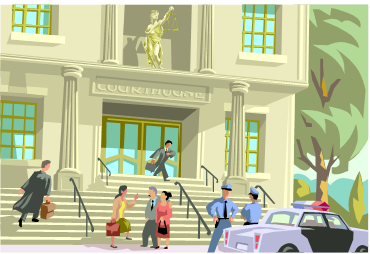
FORENSIC SCIENCE: AN INTRODUCTION
Unit
Overview
Forensic science is one of the fastest growing fields for high school
science classes as well as at the college level. Forensics, as defined in broad
terms, is the application of science to criminal and civil laws. This
particular unit on forensic science introduces the student to the subject and
the technical support provided by crime laboratories.
Unit
Directions
Read the following text, look at the illustrations, and answer the questions.
Key terms will be highlighted in bold print.
|
Key Terms |
||
|
forensic science |
criminal investigation |
criminalistics |
|
criminology |
Locard’s Exchange Principle |
physical science unit |
|
Biology unit |
firearms unit |
photography unit |
|
documentation |
examination unit |
toxicology unit |
|
latent fingerprinting unit |
anthropology |
polygraph unit |
|
voiceprint analysis unit |
voiceprint analysis unit |
forensic pathology |
|
entomology |
evidence collection unit |
crime scene investigation |
|
psychiatry |
odontology |
engineering |
Introduction
to Forensic Science
Welcome to the world of forensic science! This is one of the fastest growing topics for high school programs. Just a few years ago no one would have imagined that the subject of forensic science would become part of our television culture. For many years, forensic science has been a part of the criminalistics profession and has provided a level of sophistication to criminal investigations that has been unparalleled. Perhaps it is the desire to see criminals apprehended with evidence to support and ensure justice.
Forensics has become a part of our society through television programs, news reports, and written media such as newspapers and magazines. In fact, forensics seems to be in the news everyday and is at the forefront of our public response.
This course will allow you, the student, the opportunity to develop and extend your scientific skills and processes through problem-based learning. You will engage in activities that will relate to other subject areas such as: biology, chemistry, physics, mathematics, sociology, archaeology, anthropology, anatomy, health, and writing. This course will relate the above subject areas to real-life applications of criminal investigations. In some units students will have the opportunity to create their own “Forensic Science Kit” which will include the materials needed to complete the activities for that unit. Click on the PDF to see the materials needed for your “Forensic Science Kits” for the entire course. PDF File Forensic Science Kits The following skills and scientific strategies will be presented:
This course will relate the above subject areas to real-life applications of criminal investigations. The following skills and scientific strategies will be presented:
|
observation |
techniques |
|
critical and logical thinking |
documentation |
|
experimentation |
problem solving |
|
organization |
the scientific process |
Each unit and activity has a different procedure that helps you to develop a variety of general and science-specific skills and processes. This course places an emphasis on the process of learning how to complete the activities as well as an introduction to forensic science.
Forensic
Science
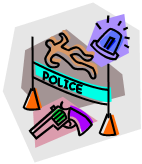 Forensic
science can be defined as the application of science to law. As crime has
become more prevalent in our society, law enforcement has found it increasingly
necessary to seek assistance from the scientific community for advice and
technical support. Much of this support has been in the field of forensic
science. Science has come to occupy an important place in the field of criminal
investigation. Criminal investigation can be defined as an inquiry into
a particular crime. Because science plays such an important role, forensic
science supplies information that is accurate and objective. In other words we
could say that forensic science is the application of science to criminal and
civil laws that are enforced by the criminal justice system.
Forensic
science can be defined as the application of science to law. As crime has
become more prevalent in our society, law enforcement has found it increasingly
necessary to seek assistance from the scientific community for advice and
technical support. Much of this support has been in the field of forensic
science. Science has come to occupy an important place in the field of criminal
investigation. Criminal investigation can be defined as an inquiry into
a particular crime. Because science plays such an important role, forensic
science supplies information that is accurate and objective. In other words we
could say that forensic science is the application of science to criminal and
civil laws that are enforced by the criminal justice system.
The term criminalistics is often used in place of the term forensics. Criminalistics can be defined as a professional and scientific discipline which involves the recognition, identification, individualization, and analysis of physical evidence by application of the natural sciences in criminal matters. Criminology, is not the same as criminalistics. It is the scientific study of crime and the criminal. The crime scene investigator, when looking for a motive, will begin to shift from criminalistics to criminology. The following units will not focus on criminology, but rather the crime scene from an objective and scientific point of view.
The
History of Forensics
 Forensic
science has been around for quite some time; however, it was not originally
recognized by the law enforcement community as a means of solving crimes. Its
origins are owed to those first individuals that developed and fine-tuned the
principles needed to identify and compare physical evidence. There have been
many scientists who have contributed great advances in this field. Some of the
better known are listed here along with their discoveries:
Forensic
science has been around for quite some time; however, it was not originally
recognized by the law enforcement community as a means of solving crimes. Its
origins are owed to those first individuals that developed and fine-tuned the
principles needed to identify and compare physical evidence. There have been
many scientists who have contributed great advances in this field. Some of the
better known are listed here along with their discoveries:
|
· Mathieu Orfila (1787 – 1853) considered to be the father of forensic toxicology |
|
· Alphonse Bertillion (18953 – 1914) devised first system of personal identification |
|
· Francis Galton (1822 – 1911) development of fingerprinting and classification |
|
· Leone Lattes (1887 – 1954) discovered blood grouping |
|
· Calvin Goddard ( 1891 – 1955) ballistics comparisons |
|
· Albert O. Osborn (1858 – 1946) document examination |
|
· Walter C. McCrone (1916 – 2002) analytical technology |
|
· Hans Gross (1847 – 1915) application of scientific disciplines |
|
· Edmond Locard (1877 - 1966) Locard’s Exchange Principle |
Of all the men who contributed greatly, as indicated in the list above, Edmond Locard is probably the most well known because of his discovery of the exchange principle. Locard’s belief was that when a criminal came in contact with an object or person, a cross-transfer of evidence occurred. His basic principle of forensic science stated that a criminal always takes something to the scene of a crime and always leaves something there. Locard’s accomplishments became known worldwide and it became known as Locard’s Exchange Principle. He believed that every criminal could be connected to a crime by dust particles carried from the crime scene. This concept was reinforced by successful and well-publicized investigations.
In 1932 the United States undertook a commitment to forensics. The FBI, under the directorship of J. Edgar Hoover, organized a laboratory that offered forensic services to all of the law enforcement agencies across the country. Today this FBI lab is the largest in the world, performing over one million examinations every year. In fact, the accomplishments of this lab have earned worldwide recognition. Its structure and successful accomplishments have served as a model for state and local agencies across this country as well as in other countries. This program grew into the FBI’s Forensic Science Research and Training Center in 1981.
This facility was dedicated to conducting research to develop innovative and new scientific methods that can be applied to forensic science. Lab personnel are also trained at this facility in the latest techniques and methods in forensics.
Modern forensic science has advanced greatly since the first crime lab was established. Today there are over 400 crime labs and nearly 40,000 forensic scientists in the United States. Modern techniques involving very sophisticated machines and procedures help forensic scientists solve crimes. Technology has speeded up and improved analysis and data retrieval, making possible the ability to store vast amounts of information about criminals – information that can be readily exchanged within and between law enforcement agencies.
|
Forensic Science Timeline |
|
|
700s |
Chinese used fingerprints to establish identity of documents and clay sculptures, but without any formal classification system. |
|
ca.1000 |
Bloody palm prints were meant to frame a blind man of his mother’s murder. |
|
1149 |
Idea of having a coroner was started by King Richard of England |
|
1248 |
A Chinese book contains a description of how to distinguish drowning from strangulation. This was the first recorded application of medical knowledge to the solution of crime. |
|
1447 |
Missing teeth used to identify the body of the French Duke of Burgundy. |
|
1599 |
Beginnings of the modern microscope developed. |
|
1609 |
The first treatise on systematic document examination was published. |
|
1686 |
A professor of anatomy noted fingerprint characteristics. However, he made no mention of their value as a tool for individual identification. |
|
1670 |
First simple microscope with powerful lenses created. |
|
1732 |
The basis of lie detection equipment made possible with the discovery that the human nervous system transmits information electronically. |
|
1776 |
Body of a U.S. general is identified by Paul Revere who made his false teeth. |
|
1784 |
In England a man was convicted of murder on the basis of the torn edge of a wad of newspaper in a pistol matching a remaining piece in his pocket. This was one of the first documented uses of physical matching. |
|
Ca-1800s |
An English naturalist used engravings of his own fingerprints to identify books he published. |
|
1807 |
Forensic Science Institute was established in Scotland. |
|
1810 |
The first recorded use of questioning document analysis. A chemical test for a particular ink dye was applied to a document. |
|
1814 |
First scientific paper on the detection of poisons published. |
|
1823 |
Whorls, ellipses and triangular description and a classification system is developed based on nine major types. The individualizing potential for fingerprinting is not recognized yet |
|
1835 |
The first bullet comparison was used to catch a murderer. |
|
1836 |
Method for the detection of arsenic poison is developed. |
|
1849 |
Bones and teeth remains used as evidence of murder. |
|
1850 |
First private detective agency in the U.S. set up by Allan Pinkerton. |
|
1862-63 |
First presumptive blood was developed. |
|
1864 |
Photography used for the identification of criminals and documentation of evidence and crime scenes. |
|
1877 |
Markings on the palms and fingertips used for identification in criminal cases. |
|
1879 |
System of identifying people by special body measurements. |
|
1880 |
First criminological use of fingerprints. |
|
1888 |
First hand-help camera invented by American George Eastman. |
|
1889 |
System of matching bullets to the gun that fired it. |
|
1892 |
Scientific classification of fingerprints developed. |
|
1895 |
X-rays discovered. |
|
1901 |
Basic blood groups are identified. |
|
1903 |
New York City Police Department began fingerprint files of arrested persons. |
|
1905 |
FBI established. |
|
1906 |
Bite marks found at scene of the crime first used as evidence in court. |
|
1910 |
First comprehensive hair study. |
|
1920 |
Weapon manufacture data is categorized. |
|
1920s |
Tool mark comparison used. |
|
1921 |
First polygraph (lie detector) developed. |
|
1924 |
First U.S. police crime laboratory. |
|
1932 |
FBI forensic science laboratory established. |
|
1940s |
Ways of comparing teeth from a corpse with dental records. |
|
1941 |
Voice print
identification technique developed. |
|
1950 |
Tape lift method of collecting trace evidence. |
|
1954 |
Breath analyzer for field sobriety testing developed. |
|
1957 |
Skeletal growth stages, the basis of Forensic Anthropology identification. |
|
1960 |
First laser design used to identify fingerprints. |
|
1967 |
Tests for dried bloodstains developed. |
|
1971 |
Photo-fit enabling witnesses to piece together facial features developed |
|
1980 |
Method developed for detecting DNA differences. |
|
1983 |
First use of personal computers in U.S. police control cars provide quick information from National Crime Information Centre. |
|
1984 |
Genetic profiling using DNA developed. |
|
1987 |
First time |
|
1991 |
Automated imaging system developed to compare marks left on fired bullets, cartridge cases, and shell casings. |
|
1996 |
FBI introduces computerized searches of a fingerprint database. |
This timeline is in no way a comprehensive listing of all the significant events in the development of forensics. However, many of the significant events have been listed here to show the progression of scientific sophistication.
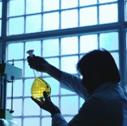
The Crime Laboratory
Crime laboratories in the United States have grown by leaps and bounds over the last 40 years. At the present time there are over 300 public crime laboratories operating at the federal, state, county, and municipal levels of government. The size of these crime labs and the diversity with which they operate depends on their capabilities to analyze crime scene evidence. Some labs are small and operate as part of a police department, while others are placed under the direction of a prosecutor’s or district attorney’s office. Some labs function as a part of the medical examiner or coroner’s office. Few are affiliated with universities or exist as independent agencies. Staff sizes of these labs vary from one person to more than 100, while the services may be diverse or specialized, depending upon the responsibility of the agency that houses the lab and its services.
Due to
judicial changes in requirements for accurate and scientifically evaluated
evidence, crime labs have had to make changes to incorporate the skills of
forensic science experts. It is not surprising that crime rates have increased,
so consequently the number of crime labs has had to increase. Not every crime
requires a forensic evaluation, however, many do just because the judicial
system requires scientifically evaluated evidence. Drug cases require a
forensic lab to do a chemical analysis and this factor alone has helped to
increase the number of labs. Once
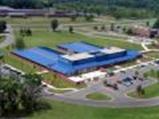
Most state governments now maintain crime laboratories that service state and local law enforcement agencies. However, some larger cities maintain their own facilities. This has helped to increase the accessibility of local law enforcement agencies to have access to crime evidence. Forensic science has grown worldwide too. Over 100 countries worldwide now maintain facilities offering forensic services.
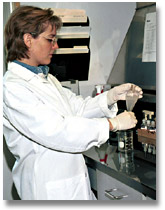
Full service crime labs offer a variety of basic services and many also provide optional services as well. The physical science unit applies the principles and techniques of chemistry, physics, and geology to the identification and comparison of crime-scene evidence. Expert criminalists staff this unit and use modern analytical instrumentation for a diverse examination of evidence.
A biology
unit is staffed with biochemists and biologists that apply techniques to
identify
The firearms unit is a busy place due to the number of firearms used in crimes. They also study discharged bullets, cartridges cases, shotgun shells, and ammunition of all types. The comparison of tool marks is also examined at this unit.
The photography unit examines and records physical evidence. Highly specialized technology aids in the preparation of photographic exhibits for courtroom presentation.
At the document examination unit handwriting and typewriting on questioned documents are studied to ascertain authenticity and/.or the source.
The latent fingerprinting unit processes and examines evidence for latent fingerprints.
The toxicology unit examines body fluids and organs to determine the presence or absence of drugs and poisons
In the polygraph unit, or lie detector, the staff is trained in the techniques of criminal investigation and interrogation. The lie detector has become to be recognized as an essential tool of the criminal investigator rather than the forensic scientist.
In the voiceprint analysis unit investigators tie the voice to a particular suspect. A sound spectrograph is used that transform speech into a visual graphic display called a voiceprint. Sound patterns produced in speech are unique to the individual and this validity provides the uniqueness of the speech patterns.
The evidence collection unit incorporates crime-scene evidence collection into the total forensic science is slowly gaining recognition in the U.S. The unit dispatches specially trained personnel to the crime scene to collect and preserve physical evidence that will later be processed at the crime lab.
Other forensic services offered at a full-service crime lab might include: forensic pathology, anthropology, entomology, psychiatry, odontology, and engineering. This is by no means a complete list of services provided by a crime laboratory. The various units and their services will be discussed in detail in future content of this course.
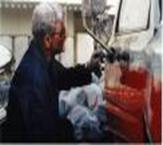
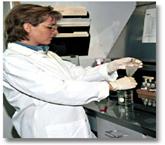
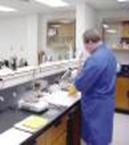
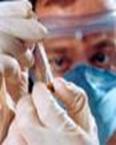
Scene-of-the-Crime
Forensic investigators use tools from a scene-of-the-crime kit when they are out in the field investigating crimes. Kits that are used to process crime scenes come in different sizes and contain instruments and implements for different purposes. These kits can be purchased commercially, or investigators can put together their own version. Most kits are a large box, similar to a fishing tackle box. The following tools would be found:
|
Scene-Of-The-Crime Tool Kit |
||
|
crime scene tape |
flashlight |
Logbooks |
|
pens |
camera and film |
paper sacks |
|
tongue depressors |
rubber bands |
sketch pad |
|
disposable clothing |
disposable masks |
latex gloves |
|
coveralls |
protective cap |
shoe covers |
|
measuring implements |
fingerprinting items |
Casting items |
|
orange flags |
string |
Butcher paper |
|
rape investigation kit |
field test kit for drugs |
blood draw kits |
|
chalk and/or tape outline |
scalpel |
angled mirror |
|
tweezers |
glass jars |
magnifying glass |
|
evidence labels |
|
|
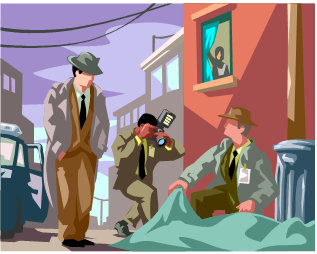
Taped inside the lid of the kit can be found a conversion chart for distance, weight, and volume. It is always a good idea to keep the living victims in mind and include pamphlets on domestic abuse victims and the telephone numbers of local rape counselors.
Once investigators leave the office or the crime lab, they may be in for long hours at the scene of the crime. In order to be prepared every time with the needed tools, anything that is used up in the kit must be replaced immediately. Another kit kept in the crime scene vehicle contains tools such as hammers, pliers, a screwdriver, etc. Some types of kits are for a specific use such as a fingerprinting kit, a casting kit (for tire, shoe, and footprints), a trajectory kit (for shootings), a trace evidence kit, and a sexual assault kit. There are special kits for gunshot residue, the presence of blood, for blood tests, bodily fluid collection, bug sample collecting, and for assessing hazardous situations. When the evidence is collected, it goes right back to the lab for processing.
U.S.
Crime Facts
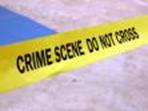 Forensics
is not just used for crime evidence. It has successfully been used in other
areas as well. These other areas will be discussed at a later time. However,
this section of the unit will present some interesting facts on crime in the
United States. Some of these statistics will likely surprise you. It will
become obvious why forensic investigations are at an all time high.
Forensics
is not just used for crime evidence. It has successfully been used in other
areas as well. These other areas will be discussed at a later time. However,
this section of the unit will present some interesting facts on crime in the
United States. Some of these statistics will likely surprise you. It will
become obvious why forensic investigations are at an all time high.
|
· about 90% of local police agencies have fewer than 25 sworn officers |
|
· New York City has the largest police department, with more than 30,000 sworn officers |
|
· almost half the police departments in the U.S. have fewer than 10 sworn officers |
|
· a property crime is committed every 3 minutes |
|
· a motor vehicle theft occurs every 20 seconds |
|
· about 43.5 million crimes are committed each year |
|
· the most common reason for arrest in this country is “driving under the influence” |
|
· there are almost 24,000 arrests made for murder each year |
|
· California has the most murders, with almost 4,000 each year |
|
· about 70% of murders are committed with a firearm |
|
· a murder is committed every 23 minutes |
|
· a violent crime takes place every 17 seconds |
|
· about 60% of murders in big cities are solved |
|
· about 75% of murders in small rural areas are solved |
|
· about 87% of murder victims knew their killers |
|
· according to one survey, 1 our of every 6 children ages 10 to 17 has seen or knows someone who has been shot |
|
· an aggravated assault occurs every 28 seconds |
|
· there are approximately 43, 547,400 crime victims each year, not including murders |
|
· there are almost 520,000 arrests each year for aggravated assault |
|
· about 6% of all criminals commit 70% of all violent crimes |
|
· approximately 10% of all violent criminals each commit more than 600 crimes per year |
|
· those arrested for violent crimes average 9.4 arrests each |
|
· there are over 400,000 arrests made for burglary each year |
|
· a burglary happens every 12 seconds |
|
· a robbery is committed every 51 seconds |
|
· poor households (families with yearly incomes less that $7,500) are victims of crime almost twice as often as upper-income household |
|
· about 80% of people arrested are male |
|
· 70% of all arrests are men ages 15 to 34 |
|
· One larceny (theft) is committed every 4 seconds |
Forensic Science Today and
Tomorrow
Forensic
science has played a large and critical role in a wide range of cases for many
years. Forensic science does not solve 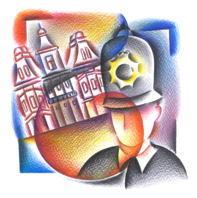 the
crime alone; however, it does give the detectives a powerful tool to assist in
the investigation and conviction of criminals. By using the latest available
methods and technology, modern forensic scientists can confirm or discount
theories with a certainty that would have amazed previous generations. Keep in
mind that forensic science is not foolproof and can sometimes be open to
interpretation. As forensics becomes more powerful and reliable, it must be
handled with care if the guilty parties are to be convicted and the innocent
cleared. But not all forensic investigations involve crime solving. After 9/11
and the tsunami disaster in the Pacific Ocean, for example, forensics is
quickly becoming a means of identifying the dead. Forensics has been used to
identify the dead for quite some time, however, it becomes a powerful tool
following mass disasters, including such events as airplane crashes and war
crimes.
the
crime alone; however, it does give the detectives a powerful tool to assist in
the investigation and conviction of criminals. By using the latest available
methods and technology, modern forensic scientists can confirm or discount
theories with a certainty that would have amazed previous generations. Keep in
mind that forensic science is not foolproof and can sometimes be open to
interpretation. As forensics becomes more powerful and reliable, it must be
handled with care if the guilty parties are to be convicted and the innocent
cleared. But not all forensic investigations involve crime solving. After 9/11
and the tsunami disaster in the Pacific Ocean, for example, forensics is
quickly becoming a means of identifying the dead. Forensics has been used to
identify the dead for quite some time, however, it becomes a powerful tool
following mass disasters, including such events as airplane crashes and war
crimes.
The future of the forensics field promises to be increasingly reliable. As technology advances, the accuracy of forensics advances as well. There will be significant advances in DNA profiling, fingerprint analysis, voice prints, retinal screening, and the analysis of chemical screening in perspiration. These types of futuristic ideas will be used to help identify suspects but can also be used for security purposes for regular citizens. And of course the future of computer possibilities are endless. The future of forensic science is sure to be capable of things we can barely imagine today. The goals of forensics cannot be isolated; they must work in partnership with law enforcement agencies, the academic community, and private industry to develop, analyze, promote, and interpret new technologies that will advance crime-solving capabilities.
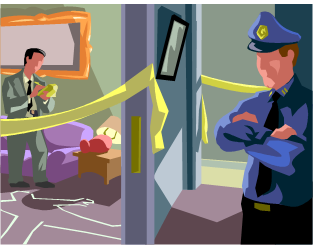
The
Forensic Scientist
A crime scene investigator works in crime laboratories where s/he must be skilled in the application of principles and techniques of the physical and natural sciences. They are not freelance detectives, but work for the state. If we would want to be more precise, they work for the court and everything they do has a legal goal in mind. That goal is to find evidence that proves who did this, how they did it, and why. The rules of the court and the admissibility of evidence is always in the background, influencing the collection process of evidence. Everything that a crime scene investigator (C.S.I.) investigates may be held up for display in a courtroom. At this point in time we will not go into the legalities of presenting evidence in court. But keep in mind that crime scene investigators must remain aware of what the court system demands and disallows.
With that in mind, let’s talk about what a C.S I. does. They work in crime laboratories, both small and large, and analyze, identify, and classify evidence as it is related to criminology, law enforcement, or investigative work. They collect and preserve evidence in a variety of ways that will be discussed in a later unit. A C.S.I. may be employed in a state crime lab, by the secret service, the FBI, and the military.
Some of these professionals work in labs while others work the scene of a crime. A C.S.I. starts at the bottom and works up through the system.
A C.S.I. handles detailed work so thoroughness and accuracy are of the utmost importance. Good communication and writing skills are necessary, especially when testifying in court. There is constant pressure on these professionals to be accurate, since their findings are essential to solving crimes and convicting criminals. Work in this field can be both challenging and rewarding.
Some of the characteristics a C.S.I. must possess are: curiosity, excellent observation skills, the ability to recall facts and events, ordinary intelligence and common sense, an unbiased mind, avoidance of inaccurate conclusions, knowledge of the essential elements of a crime and evidence collection, resourcefulness, etc. This list is not complete; however, it gives you an idea of the characteristics a good C.S.I. should possess.
Crime scene investigators are the specialists who do the scientific and technical work of criminal investigations. Some forensic positions require an associate’s degree or a high school diploma. Workers with this type of education are technicians who label evidence or do basic tasks in the lab. They are under the supervision of a crime lab scientist. Forensic workers come from a variety of backgrounds ranging from the hard sciences to social sciences to art. Some of them are engineers, dentists, doctors or nurses, chemists, toxicologists, anthropologists, artists, or psychologists. The range of specialties is broad. At the very least, these specialties require at least a bachelor’s degree and often more advanced or professional degrees. Earnings can vary widely depending on the degree and specialization, often ranging from $20,000 up through $200,000 each year. The job outlook is good and technicians with training in DNA and its related topics are in high demand. Some specialized fields such as anthropology and entomology are difficult to get into.

Conclusion
Forensic Science is an up and coming field of science. It’s everywhere you look: television programs, news reports, magazines, and newspapers. Forensics has become a part of our everyday society. In this Unit you were introduced to forensic science, the history of forensics, a timeline, the crime laboratory, crime facts, and the forensic scientist. Forensics has been used to solve crimes, as well as in mass disasters to identify the dead. As technology advances, the future of forensics holds great promise that will assist in crime-solving capabilities.